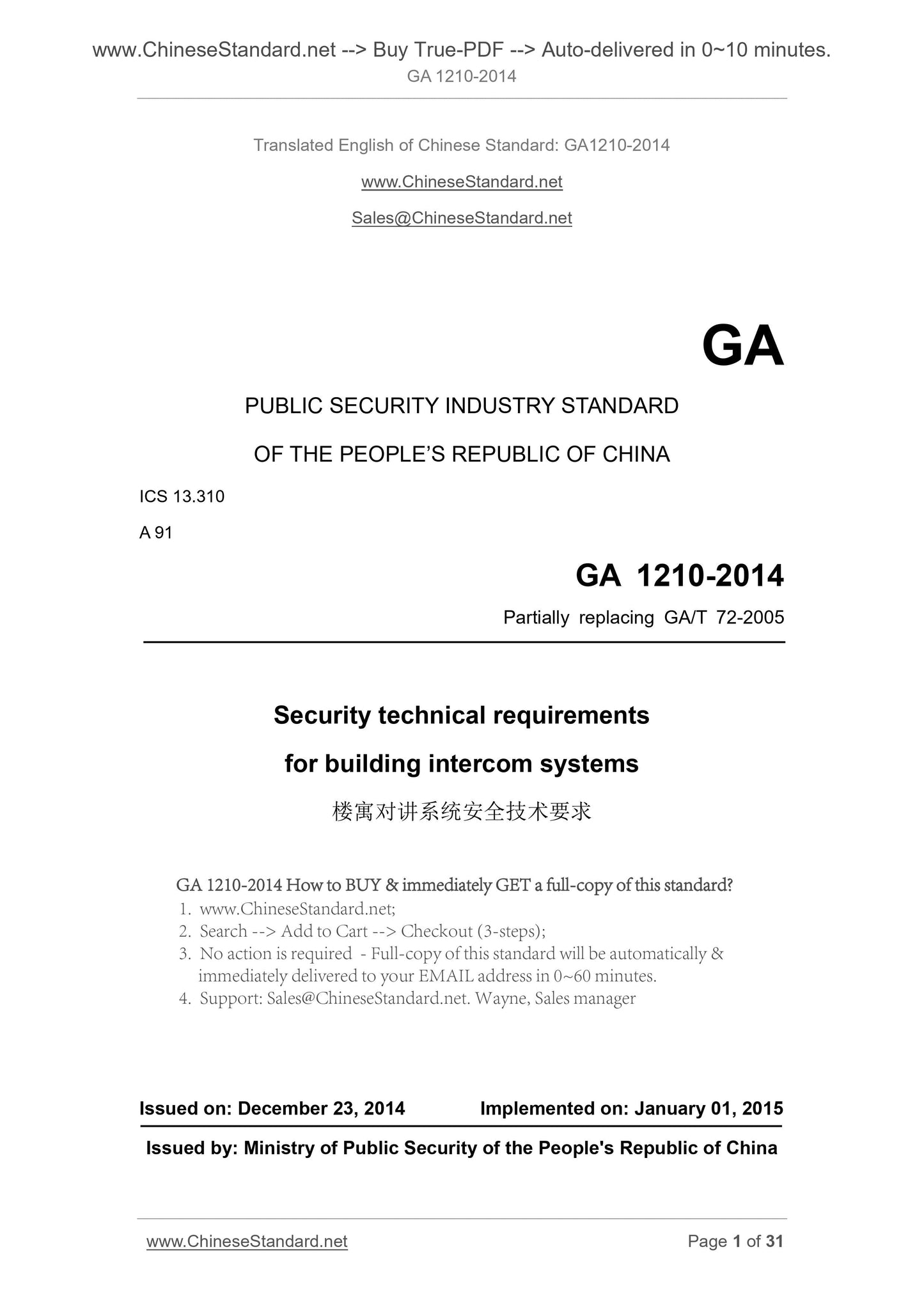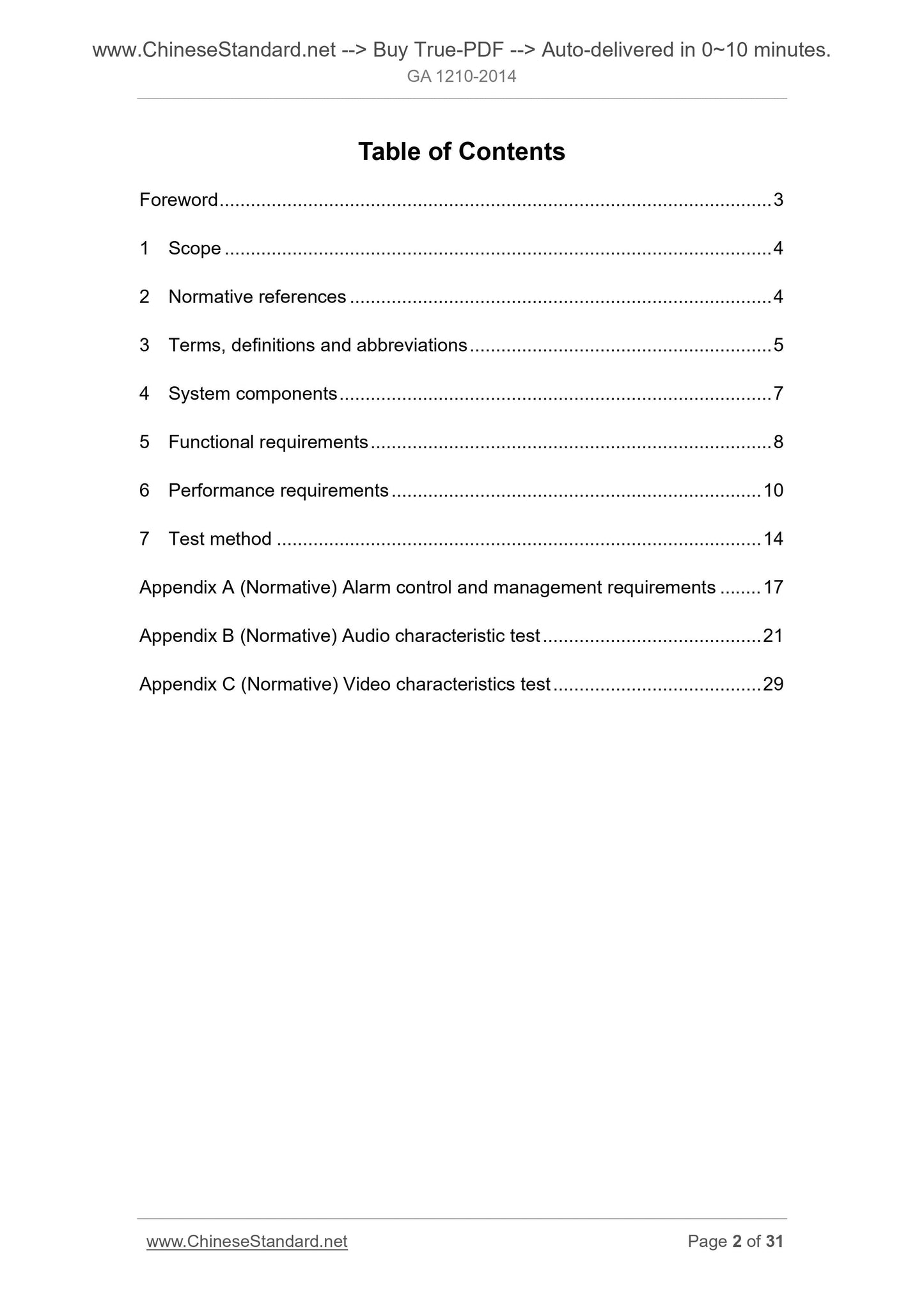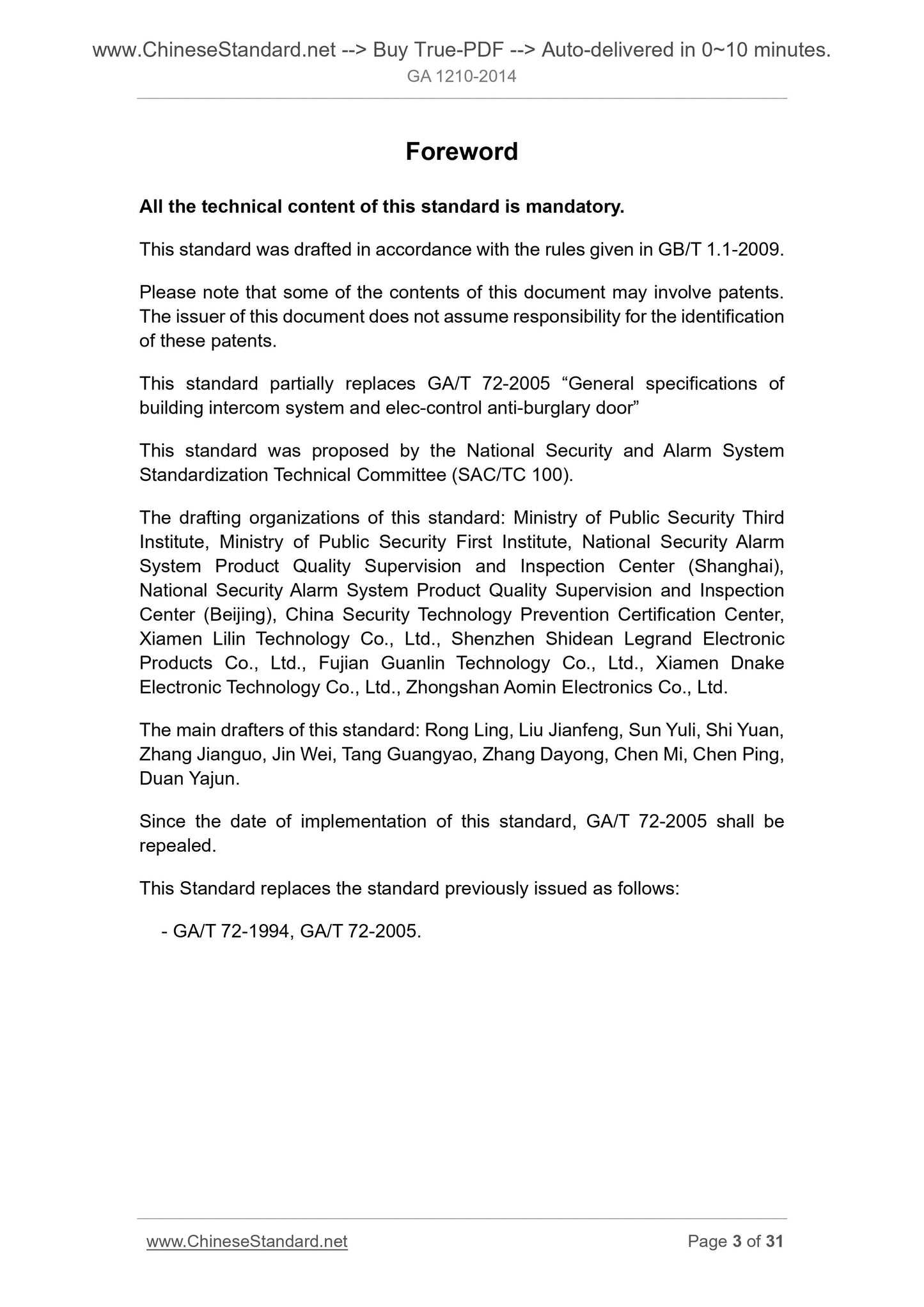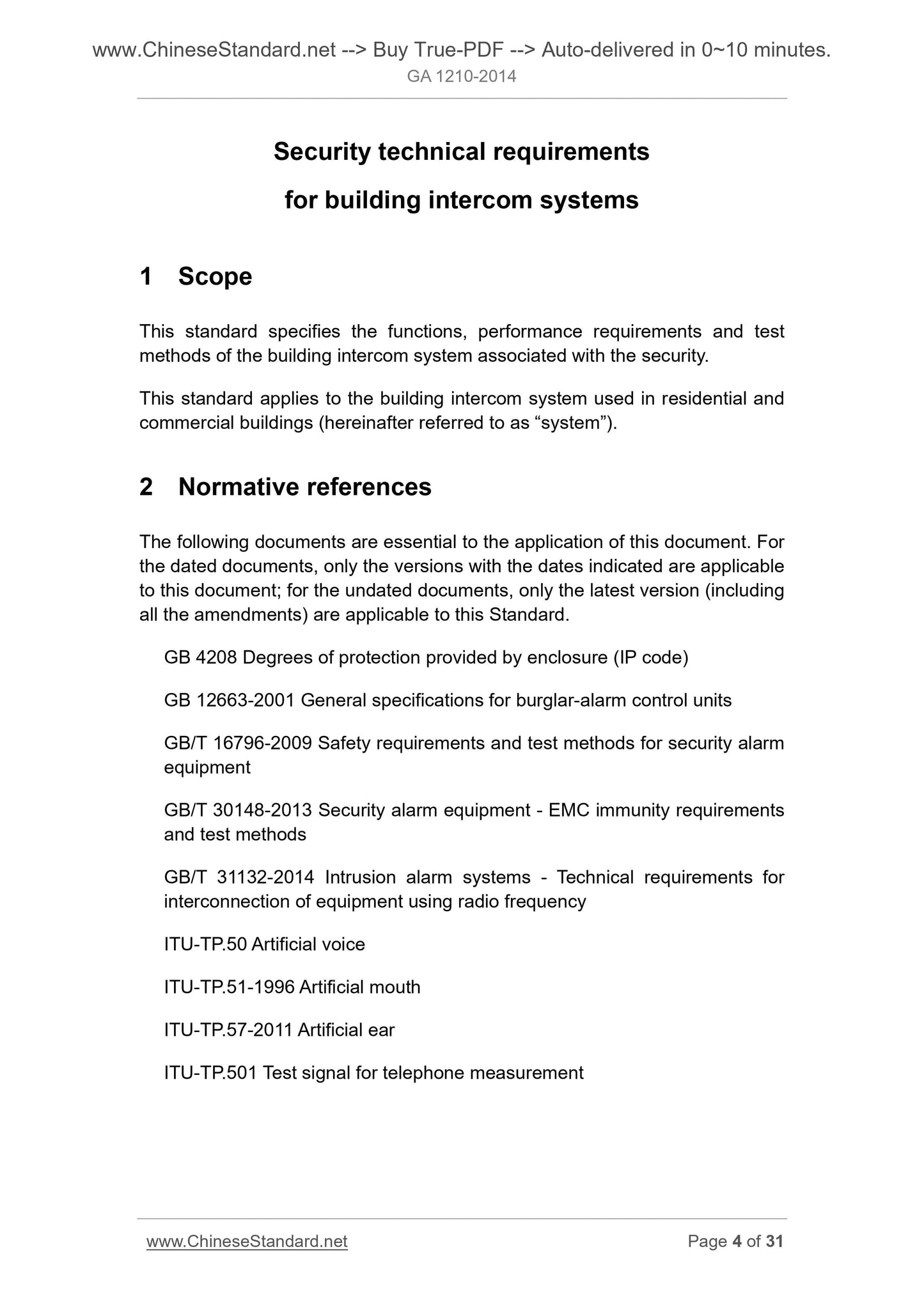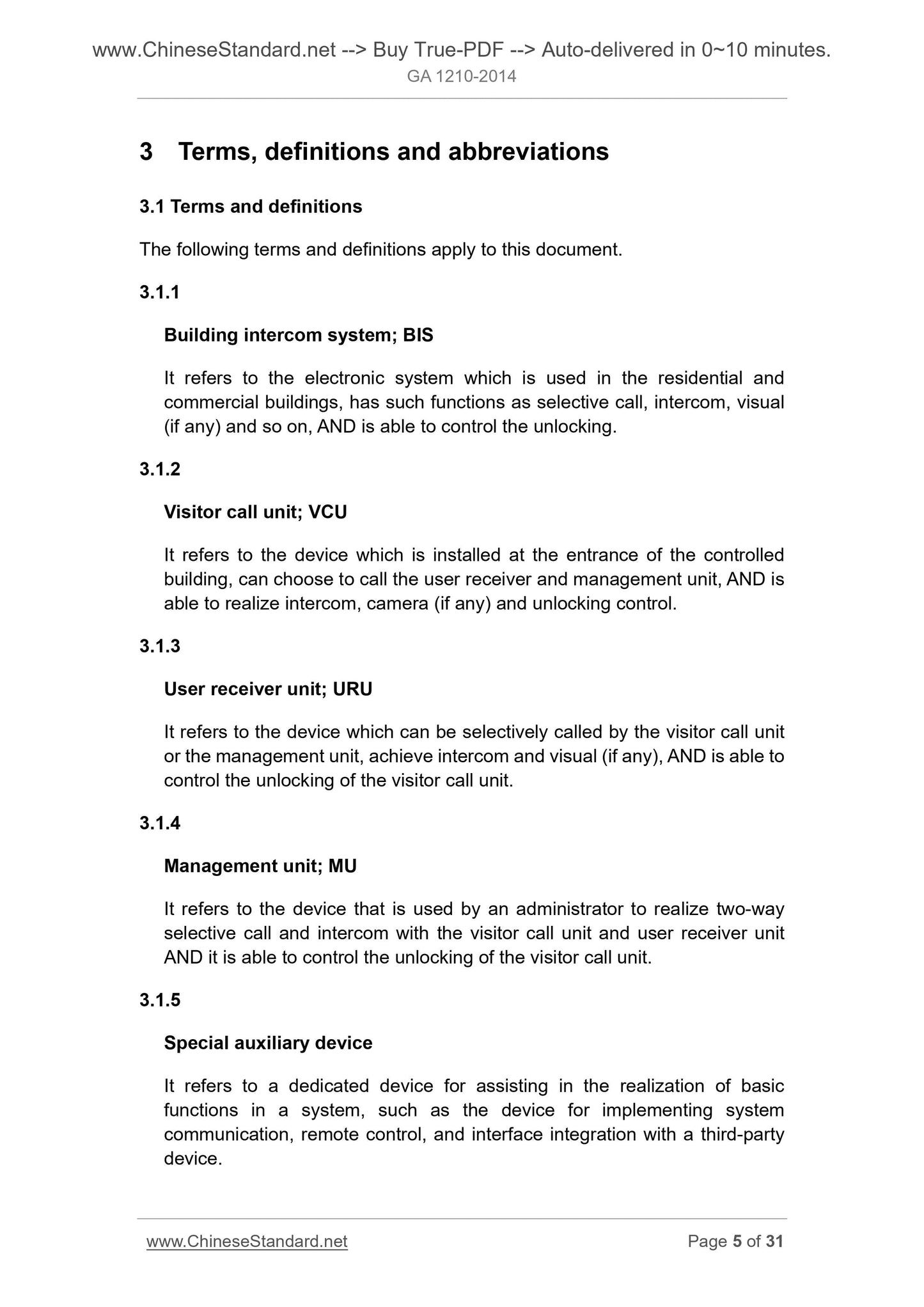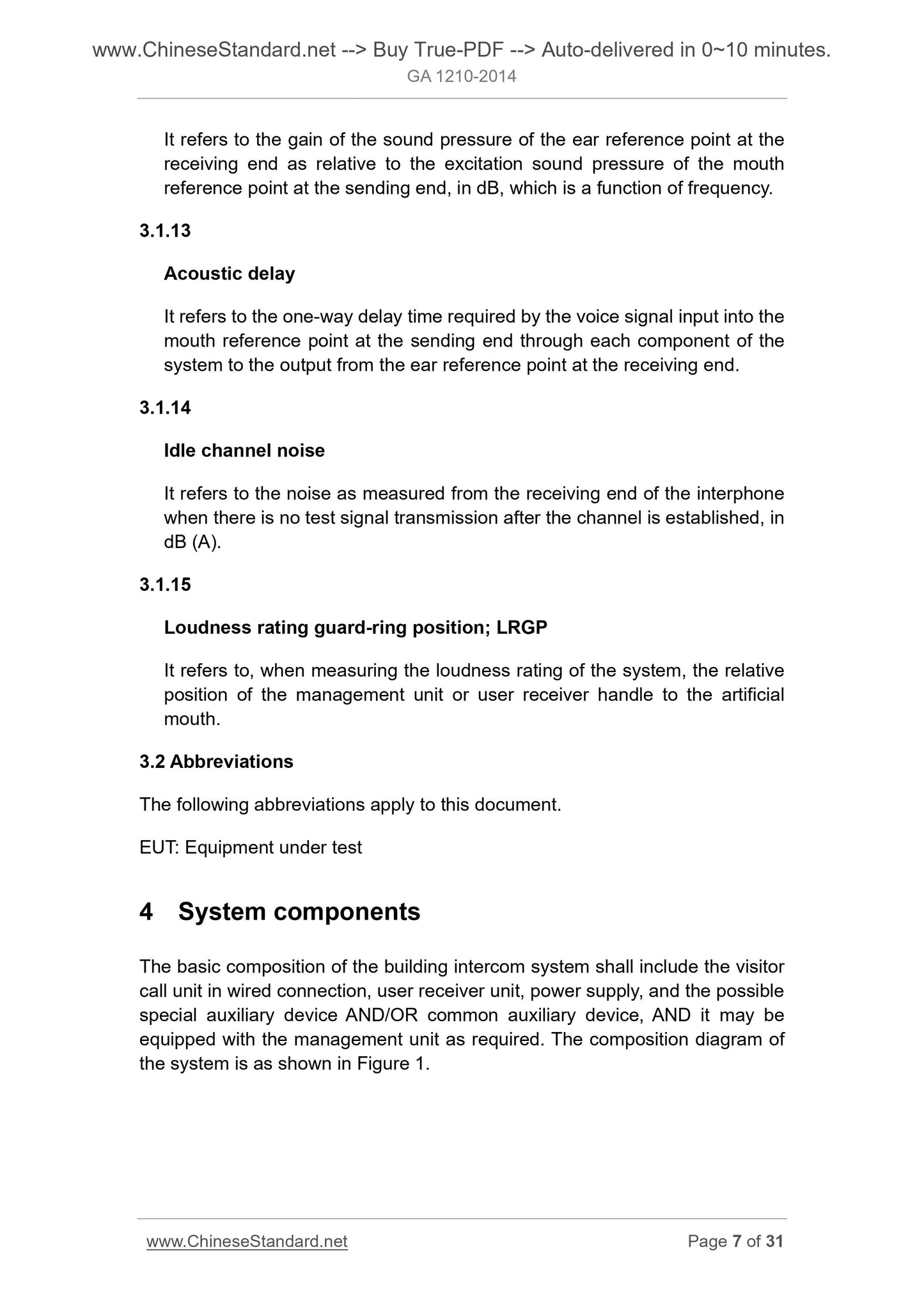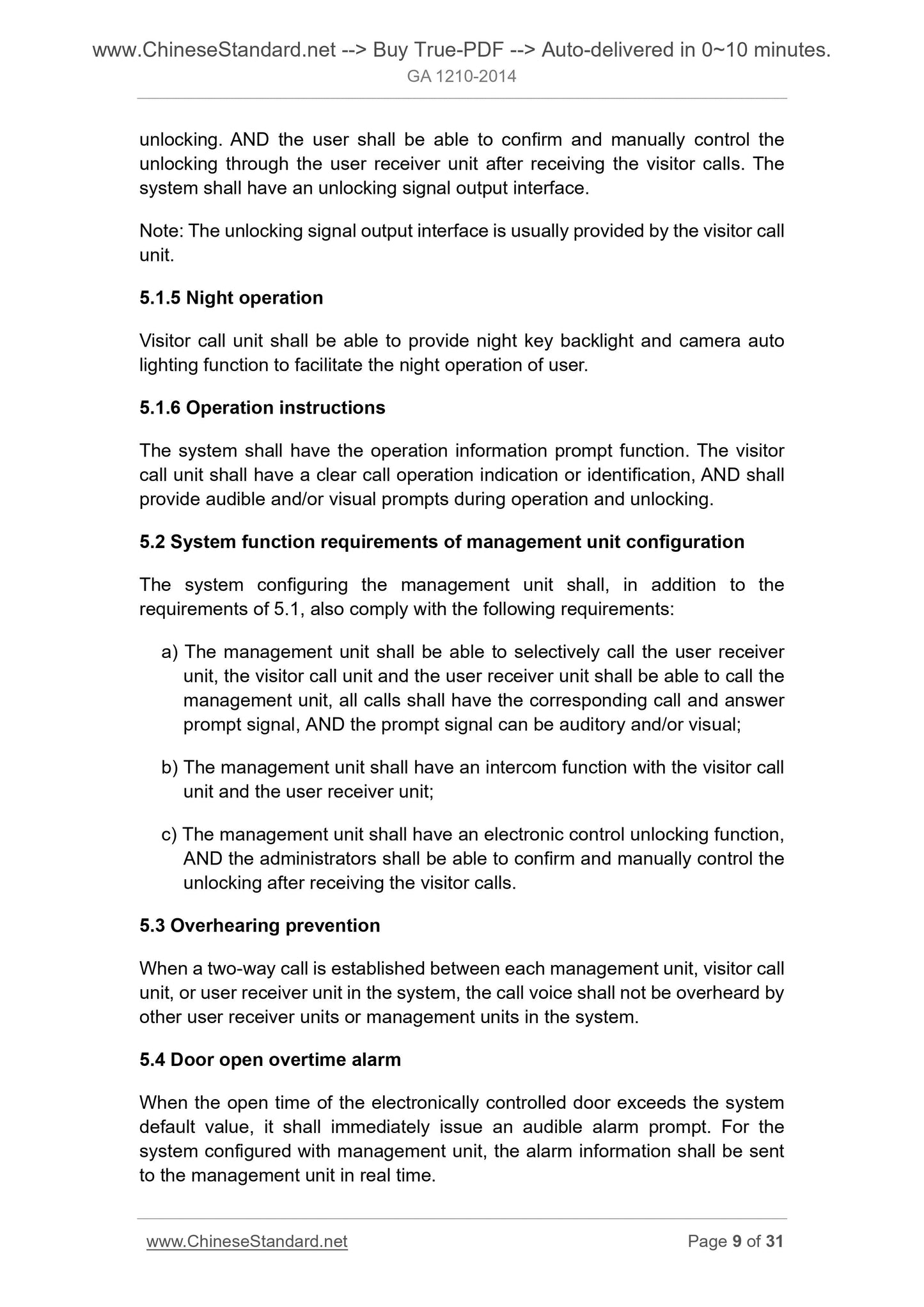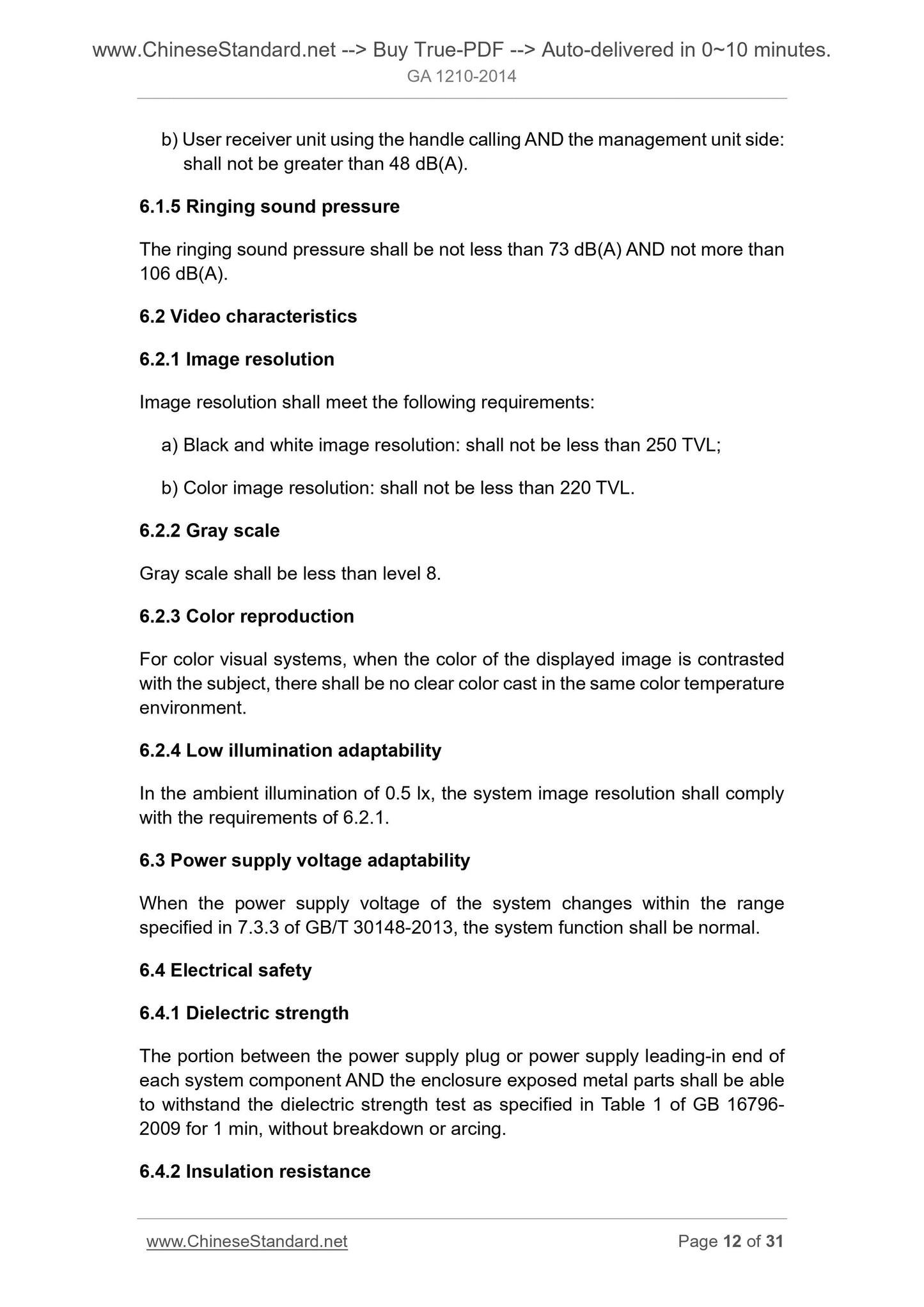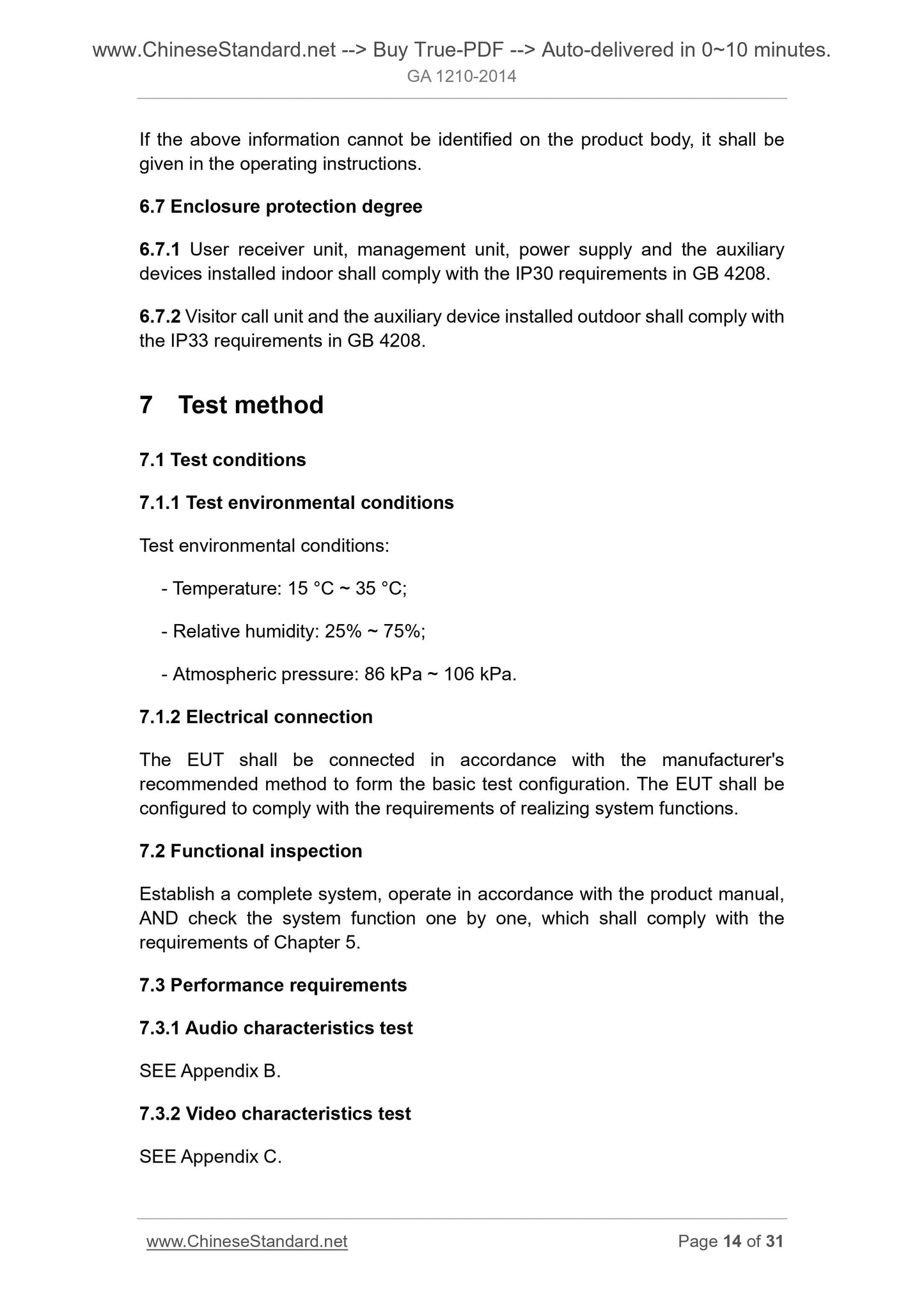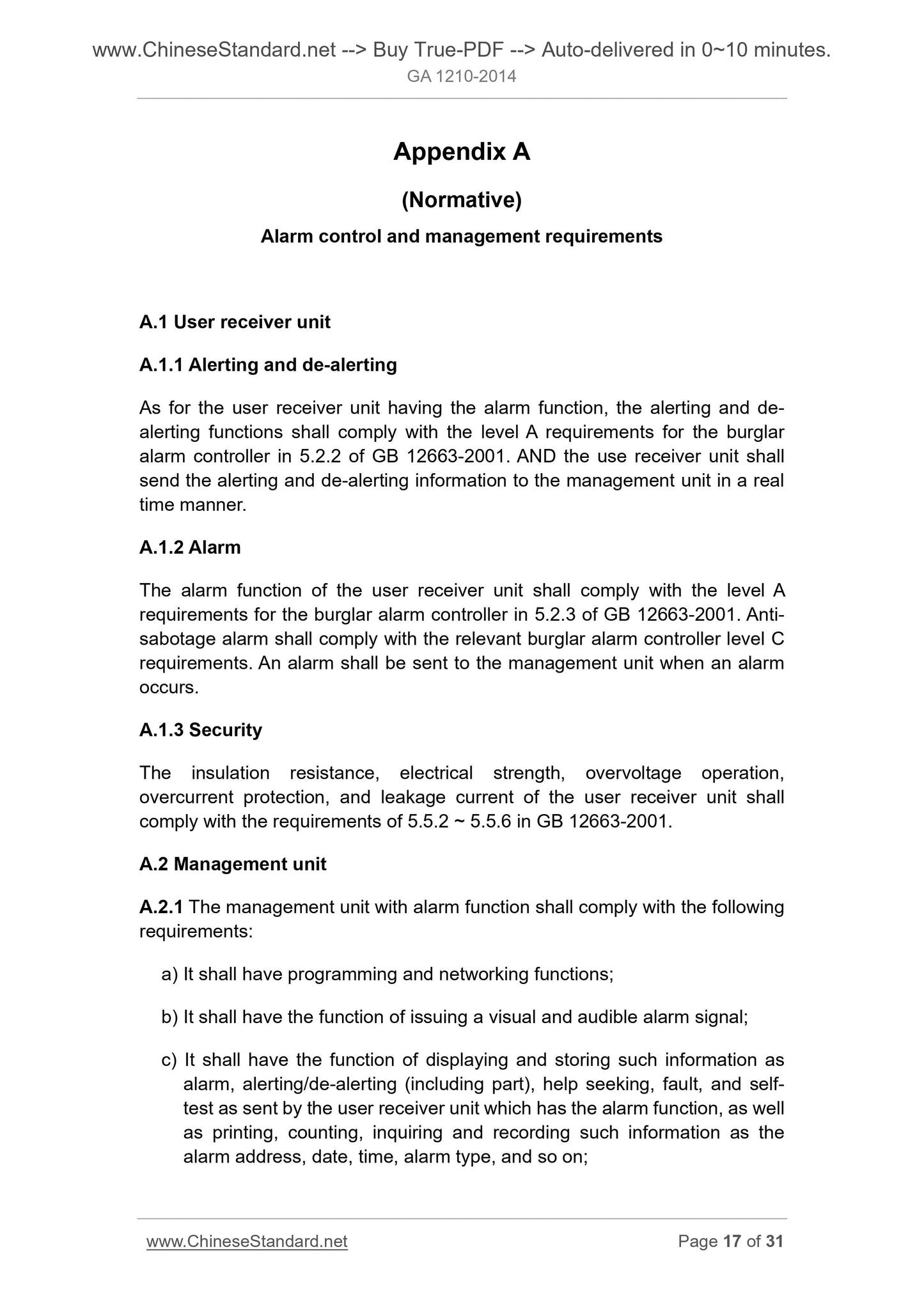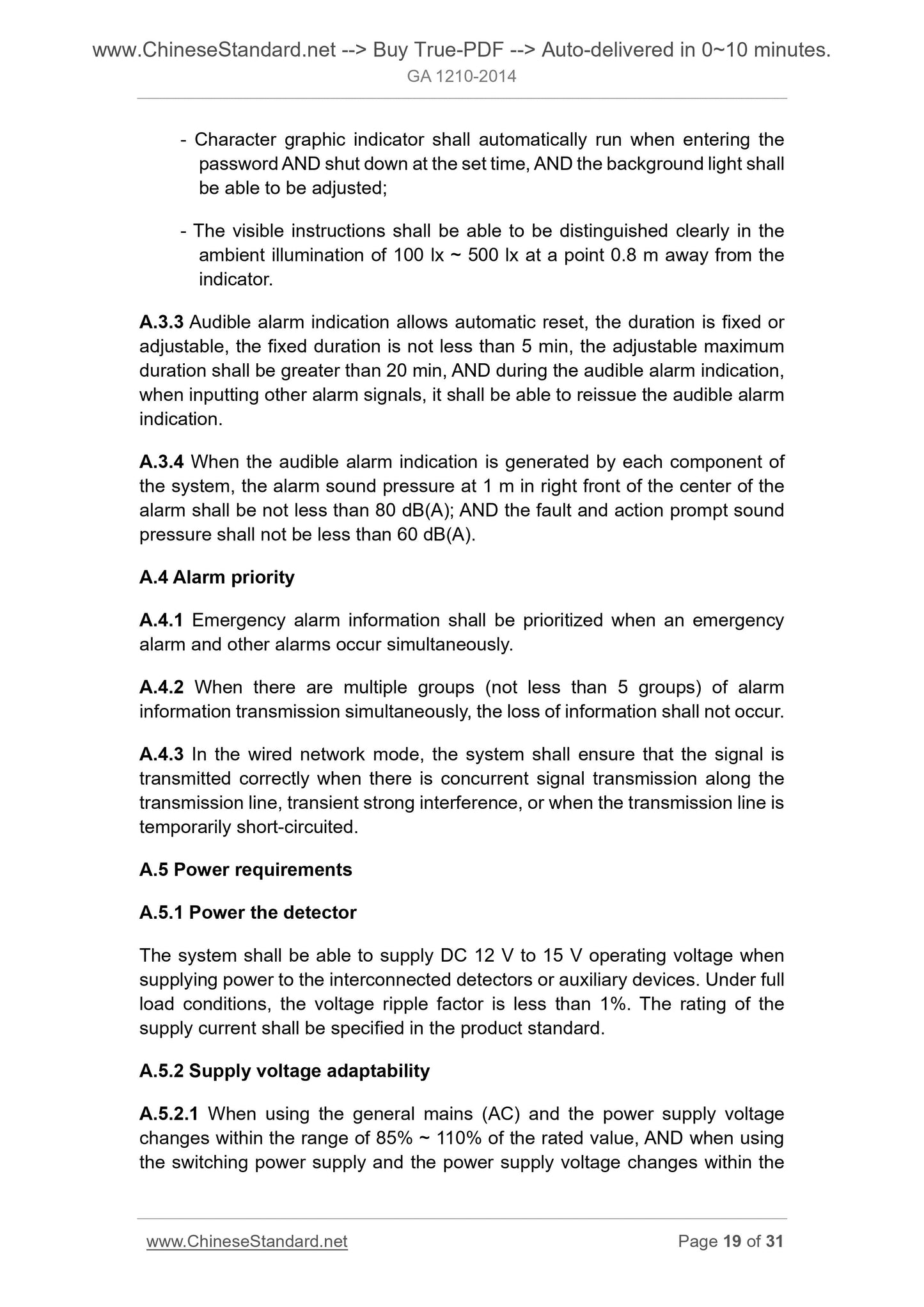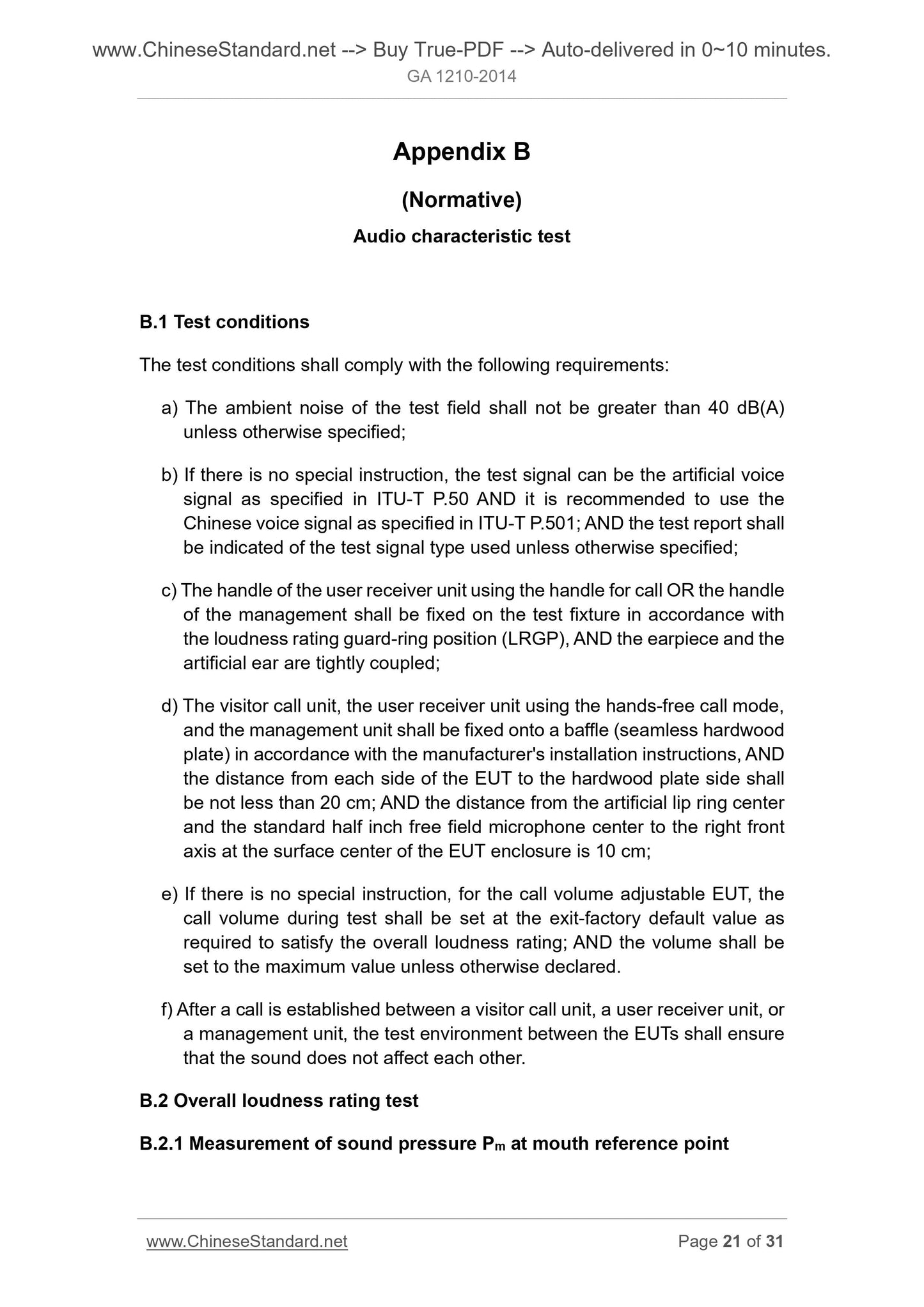1
/
of
12
www.ChineseStandard.us -- Field Test Asia Pte. Ltd.
GA 1210-2014 English PDF
GA 1210-2014 English PDF
Regular price
$150.00
Regular price
Sale price
$150.00
Unit price
/
per
Shipping calculated at checkout.
Couldn't load pickup availability
GA 1210-2014: Security technical requirements for building intercom systems
Delivery: 9 seconds. Download (and Email) true-PDF + Invoice.Get Quotation: Click GA 1210-2014 (Self-service in 1-minute)
Newer / historical versions: GA 1210-2014
Preview True-PDF
Scope
This standard specifies the functions, performance requirements and testmethods of the building intercom system associated with the security.
This standard applies to the building intercom system used in residential and
commercial buildings (hereinafter referred to as “system”).
Basic Data
| Standard ID | GA 1210-2014 (GA1210-2014) |
| Description (Translated English) | Security technical requirements for building intercom systems |
| Sector / Industry | Public Security (Police) Industry Standard |
| Classification of Chinese Standard | A91 |
| Classification of International Standard | 13.310 |
| Word Count Estimation | 23,225 |
| Date of Issue | 2014-12-23 |
| Date of Implementation | 2015-01-01 |
| Older Standard (superseded by this standard) | GA/T 72-2005 |
| Quoted Standard | GB 4208; GB 12663-2001; GB 16796-2009; GB/T 30148-2013; GB/T 31132-2014; ITU-T P.50; ITU-T P.51-1996; ITU-T P.57-2011; ITU-T P.501 |
| Regulation (derived from) | Notice on Publication of Public Safety Industry Standard (Year of 2014); Industry Standard Record Announcement No. 4 of 2015 (No. 184) |
| Issuing agency(ies) | Ministry of Public Security |
| Summary | This standard stipulates the function, performance requirement and test method of safety and related functions of building intercom system. This standard applies to residential and commercial buildings using the building intercom system (hereinafter refer |
Share
